Texas and American economies both rely heavily on agriculture. They are essential to our way of life. Although cotton, corn, feed grains, rice, and wheat are the state’s main crops, Texas also grows a wide variety of other crops, from peanuts to sunflowers to sugarcane, among many more.
Our way of life is made possible by the most valued crops in the state, not only because they contribute significantly to our revenue but also because the crops themselves are items we use daily, whether we are aware of them or not. So, what crops can be grown in Texas? Below, we will discuss 14 of the most valuable and common crops grown in the Lone Star State.
14 Most Valuable Crops Grown in Texas
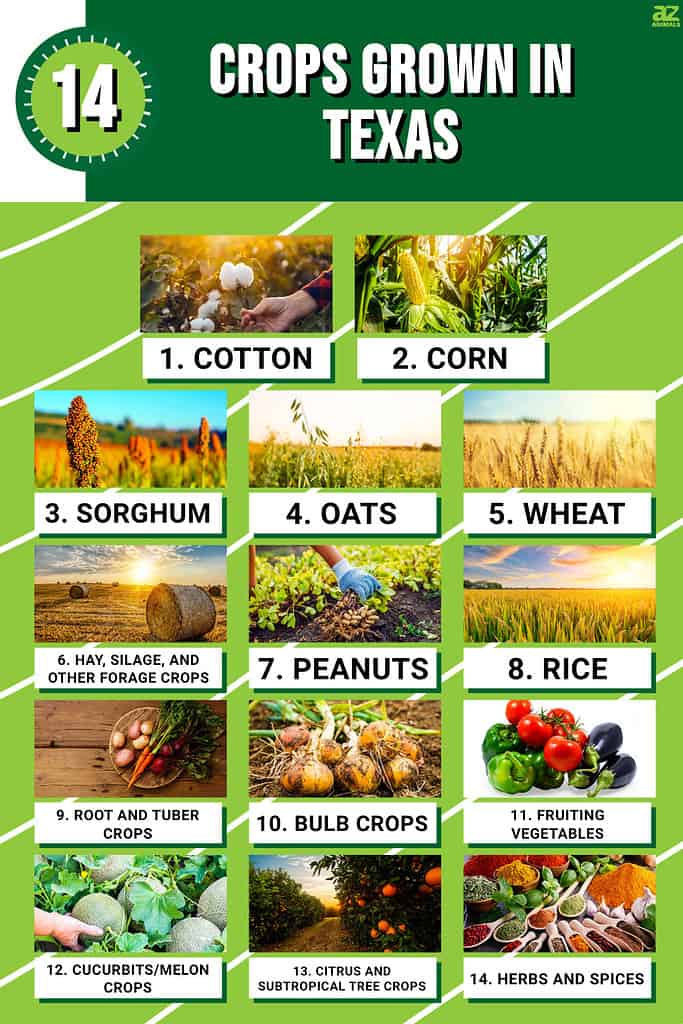
1. Cotton
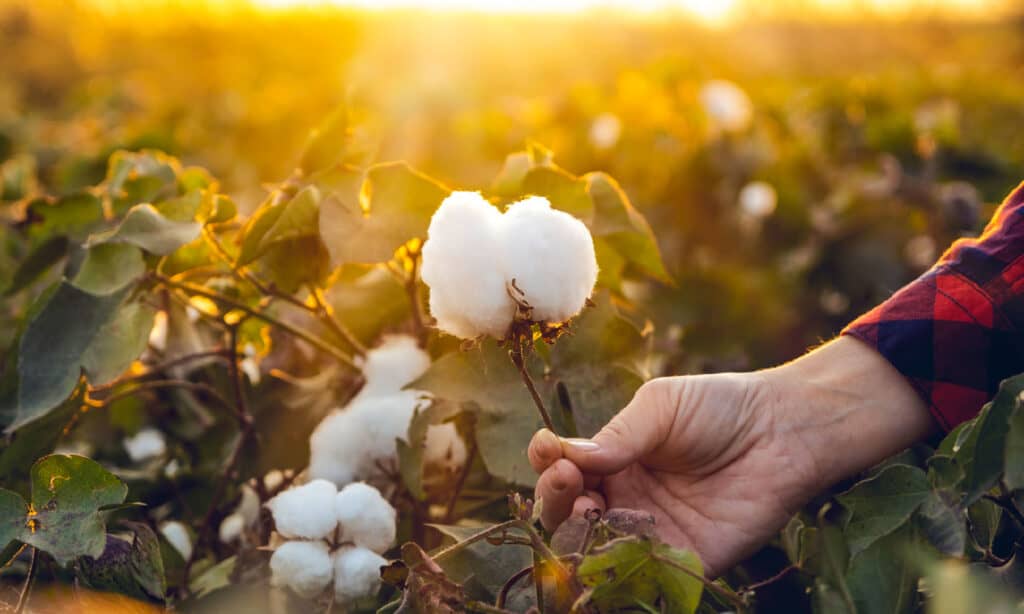
Texas is the nation’s biggest cotton producer.
©iStock.com/batuhan toker
Texas has grown cotton as a significant crop for more than a century. Since 1880, Texas has consistently produced more cotton than any other state, accounting for about 37.5% of all cotton produced in the United States today. Most of the crops grown in Texas, or 9% of the state’s agricultural revenues, come from cotton. Texas is the nation’s biggest cotton producer, and its contribution to the national economy is significant. In 2018, Texas produced upland cotton worth $2.4 billion.
2. Corn
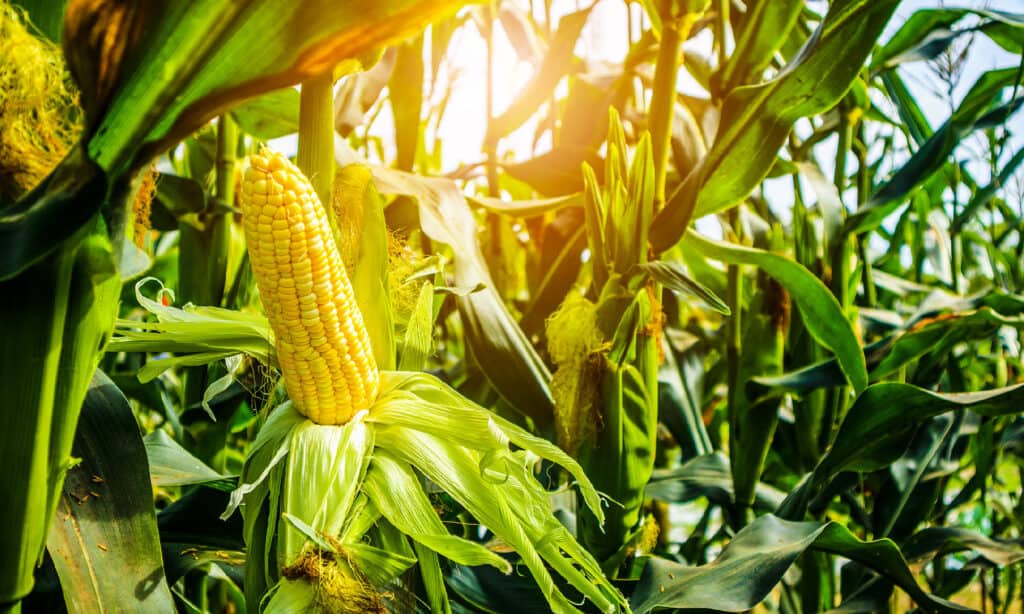
The value of maize crops in 2014 was a whopping $1.3 billion.
©iStock.com/Kwangmoozaa
All of Texas’s major regions are planted with corn, and 50% of it is irrigated. In Central Texas and the High Plains, 100,000 acres of maize are harvested as silage for local feed and dairies. Since the 1970s, as yields advanced with new varieties, there has been a rise in interest in corn farming throughout the state. The value of maize crops in 2014 was a whopping $1.3 billion. Most of the growth in acres and yields occurred in Central and South Texas, and corn was the third-most valuable crop in the state in 2018.
3. Sorghum
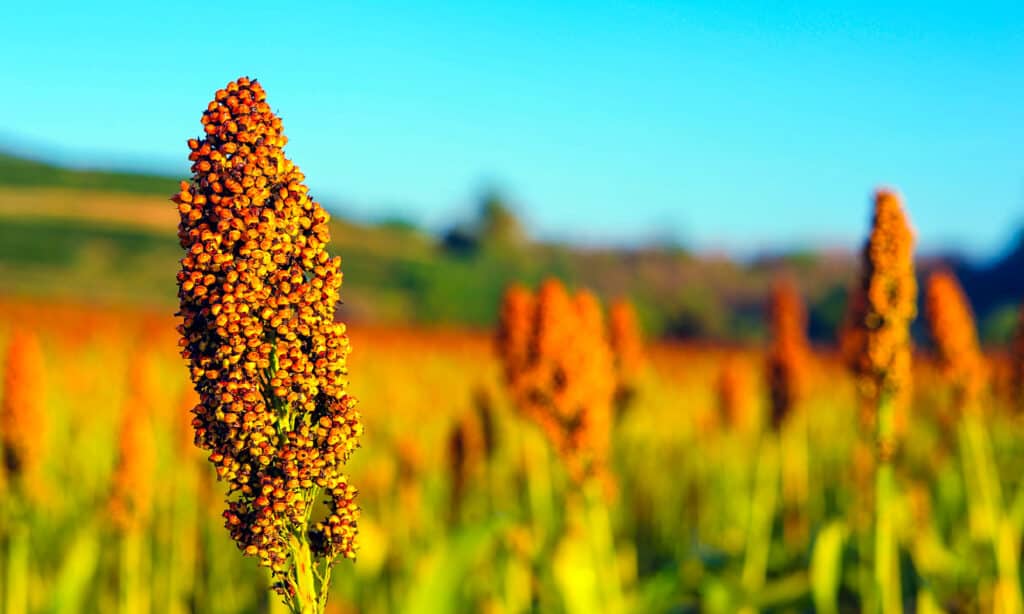
In 2018, Texas grain sorghum had the second-highest value behind Kansas.
©iStock.com/sayanjo65
There are numerous applications for grain sorghum. It is used by ethanol factories and is consumed by animals like pigs, chickens, and rabbits. In 2018, Texas grain sorghum had the second-highest value behind Kansas. A large portion of the grain is exported or utilized as feed for animals and birds across the state. An additional 0.5 to 1.0 million acres of sorghum are planted for silage or green chop, especially in the High Plains and Central Texas regions for livestock and dairy. We frequently consume dishes made possible by grain sorghum. Cookies with molasses? Sorghum from grains is used to make molasses.
4. Oats
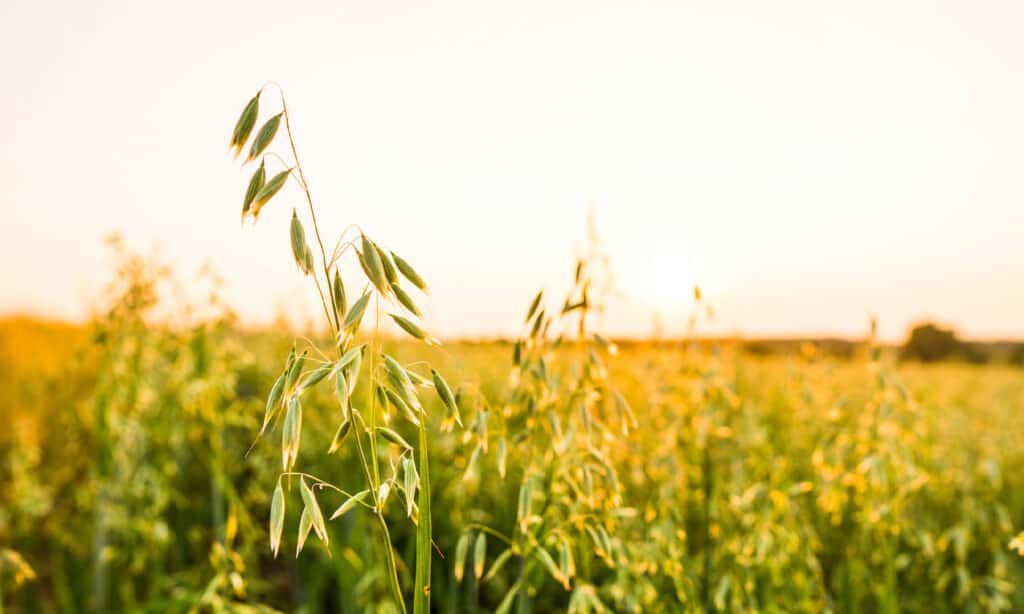
Texas is a great spot to produce oats because they are primarily grown in temperate and subtropical temperatures.
©iStock.com/Volodymyr Shtun
Oats are a significant fodder and cereal crop. These grains are grown similarly to wheat crops, and Texas is a great spot to produce them because they are primarily grown in temperate and subtropical temperatures. In Central and South Texas, where frost damage is less of a problem, and early fall grazing is preferred, generally, 600,000 to 750,000 acres are sown for winter grazing, largely for stocker calves.
5. Wheat
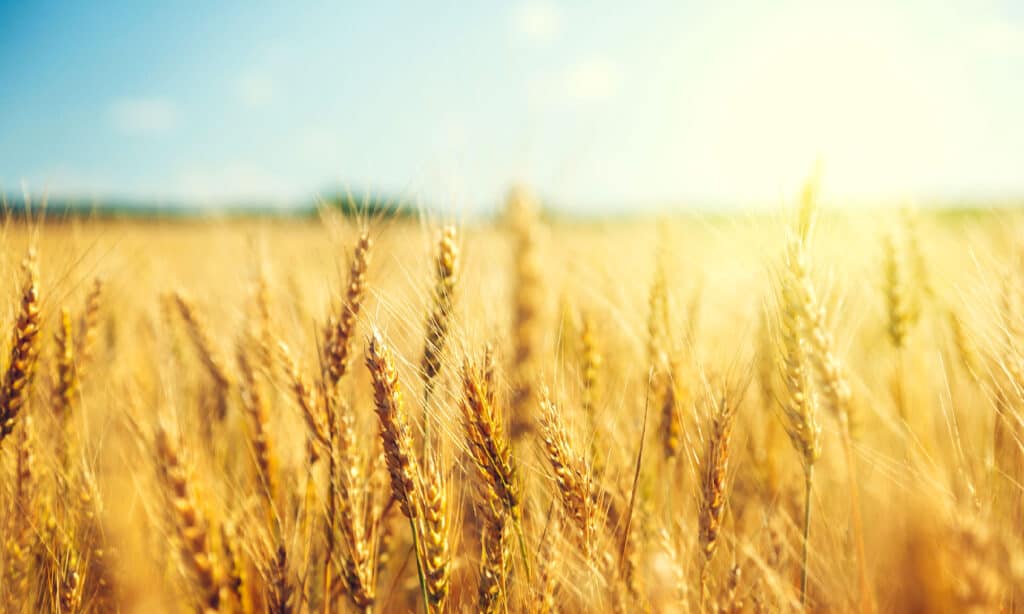
Texas produced 56.0 million bushels of wheat in 2018, with an average yield of 32.0 bushels per acre.
©iStock.com/IakovKalinin
In the High Plains, Rolling Plains, and Central Blacklands, 6 million to 6.6 million acres of wheat are sown each year. Winter wheat fields provide Texas cattle with a tremendous nutrition source, enhancing the livestock’s output quality. In Texas, close to Sherman, wheat was produced commercially around 1833. Texas produced 56.0 million bushels of wheat in 2018, with an average yield of 32.0 bushels per acre. The area in Central and South Texas has significantly increased due to the introduction of cultivars with enhanced disease resistance and the usage of wheat for winter pasture.
6. Hay, Silage, and Other Forage Crops
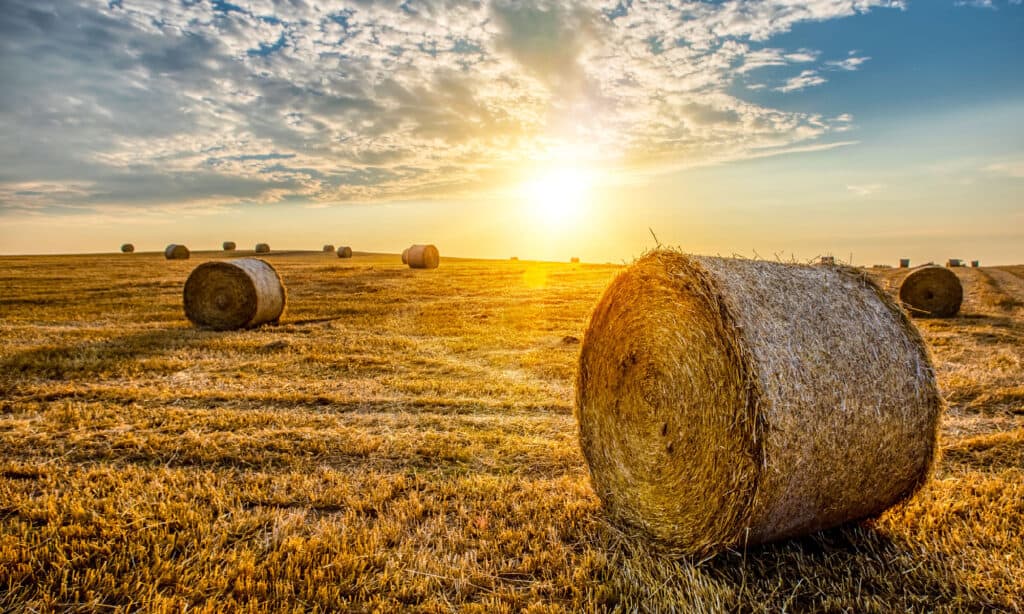
The most significant hay crops are alfalfa and annual and perennial grasses.
©iStock.com/Artush
Hay is crucial to the well-being of the animals in Texas, which is renowned for its livestock. The majority of the state’s huge domestic livestock numbers and game animals are fed entirely by hay, silage, and other forage crops, which also provide fodder needs. If their health deteriorates, so do numerous crucial aspects of the economy. The most significant hay crops are alfalfa and annual and perennial grasses. 8.4 million tons of hay were produced in 2018 from 4.7 million harvested acres at a value of 1.8 tons per acre.
7. Peanuts

Although they were first cultivated in South America, peanuts are farmed worldwide today.
©iStock.com/Maryviolet
In the tropics and warmer regions of the world, peanuts are a significant food crop farmed extensively. Although they were first cultivated in South America, peanuts are farmed worldwide today. In Texas, white Spanish peanuts are a relatively common kind. In addition to being a preferred snack for people in their natural state and as peanut butter, peanut vines provide excellent cattle fodder and are baked for that purpose. Additionally, their oil is a top pick for healthier frying.
8. Rice
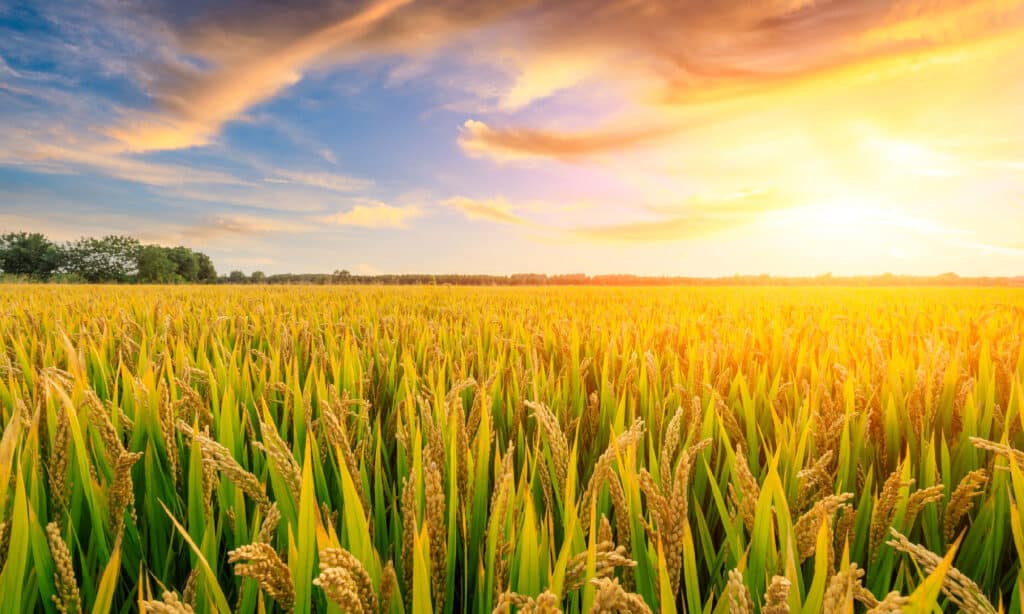
Around 20 counties in Texas’s Coastal Prairie grow rice.
©iStock.com/zhaojiankang
Texas produces extra-long grain paddy rice for premium domestic and international markets instead of the short and medium-grain rice grown in Asia. About 20 counties in Texas’s Coastal Prairie grow rice, which for a while had the third-highest value among the state’s agricultural products. In addition to using airplanes for a large portion of the fertilizing, planting, and treating of insecticides and herbicides, rice farms are completely automated, yielding rice through irrigation. However, rice stink bugs, rice water weevil, and grasshoppers are insect pests that eat and destroy rice harvests.
9. Root and Tuber Crops
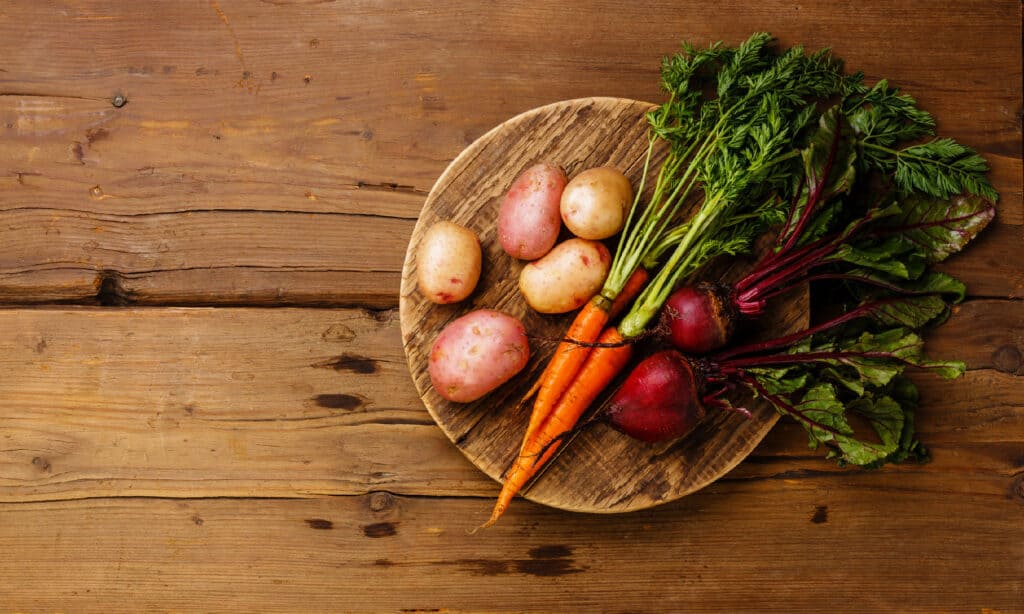
Roots and tuber crops are typically found in tropical climates.
©iStock.com/Lisovskaya
Root and tuber crops are root vegetables like beets and carrots, tubers like potatoes and sweet potatoes, and leaves from root vegetables like beet tops. Second only to cereals in importance as planted staple energy sources, roots and tuber crops are typically found in tropical climates.
Texas is the fifth-largest producer of sweet potatoes in the nation. East Texas’ Van Zandt County is home to most of the state’s commercial output. For domestic usage and roadside sales, turnips are farmed in East Texas, with planting occurring almost year-round.
10. Bulb Crops
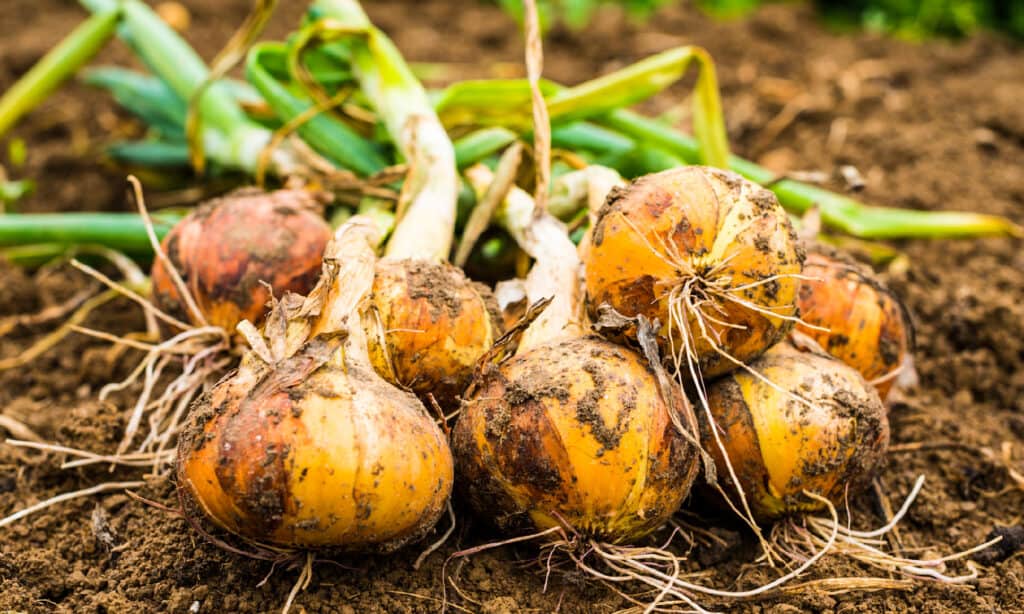
One of Texas’ bulb crops, garlic, has a high value, but the output is constrained in part by labor costs.
©iStock.com/rootstocks
Garlic, leeks, dried bulbs, and green onions are examples of bulk crops, and these crops are particularly significant in the Lower Rio Grande Valley and High Plains. Growing bulbs in Central Texas or anywhere else in the south cannot be easy, and most conventional bulbs, particularly tulips, need a chilling period.
One of Texas’ bulb crops, garlic, has a high value, but the output is constrained by labor costs and unpredictability in the market. East Texas produces most of it from transplants. With yearly cash sales of $60 million to $100 million and production from direct seed and transplants, onions are the most important vegetable crop.
11. Fruiting Vegetables
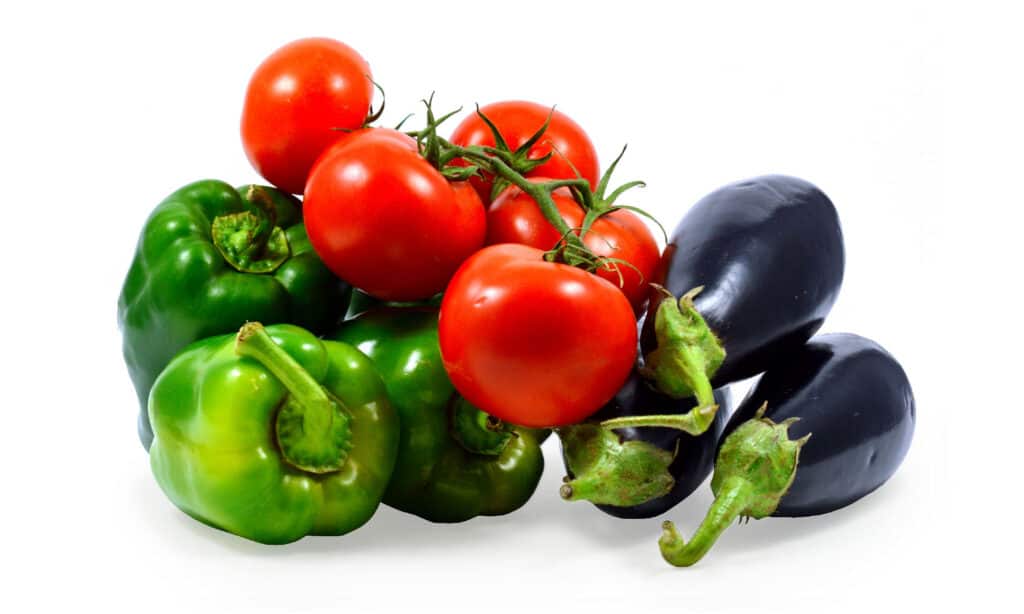
Texas’ main vegetable-producing regions include the Rio Grande Valley, the Winter Garden, the High Plains, and East Texas.
©iStock.com/lisa_l
The cultivation of fruiting vegetables includes peppers, tomatoes, and eggplant. In Texas’s main vegetable-producing regions, which include the Rio Grande Valley, the San Antonio or Winter Garden, the High Plains, and East Texas, direct-seeded and transplanted sweet or mild peppers are grown. For local sales, however, eggplants are transferred and farmed on 200 to 600 acres with productivity akin to that of tomatoes.
In East Texas, tomatoes used to be a 100,000-acre crop, but they now only have 1,000 to 2,200 commercial acres. 90% of this goes to fresh neighborhood markets and roadside sales, primarily in East Texas’ Cherokee, St. Augustine, and Van Zandt counties.
12. Cucurbits/Melon Crops
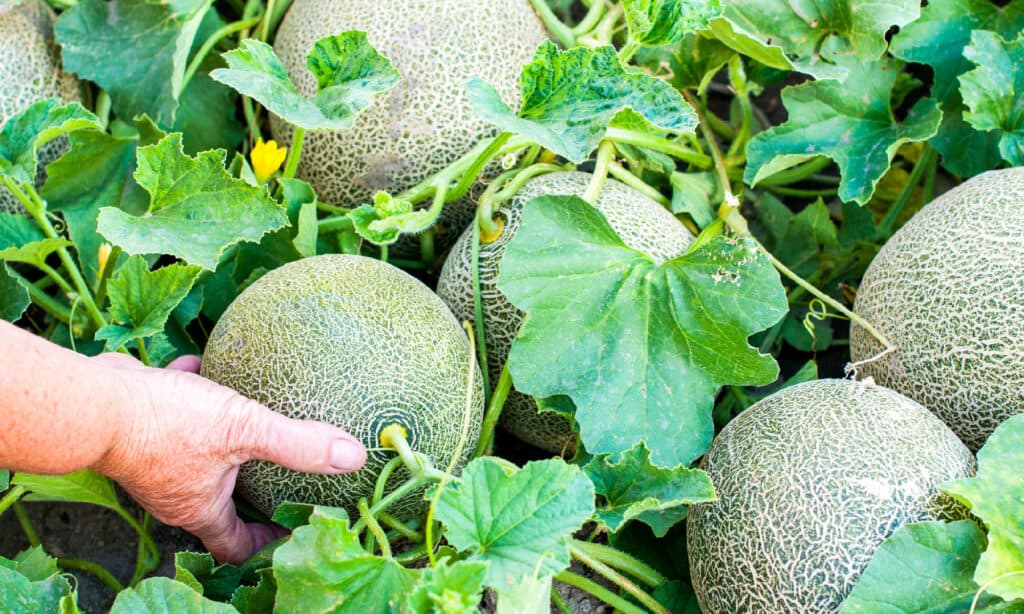
Cucurbit crops are significant across the industry and are planted in the spring and fall.
©iStock.com/tchara
Cucurbits include the squash and melon subgroups. These crops are significant across the industry and are planted in the spring and fall. Agrarian Indians preserved hard-shelled pumpkins and squash in East Texas during the early days of Texas as a food crop for the winter. Today, squash is farmed for both domestic usage and fresh market sales. Cucumber beetles, nutsedge, devil’s claw, pigweed, and other insect pests are among those that consume and kill cucurbit and melon crops.
13. Citrus and Subtropical Tree Crops
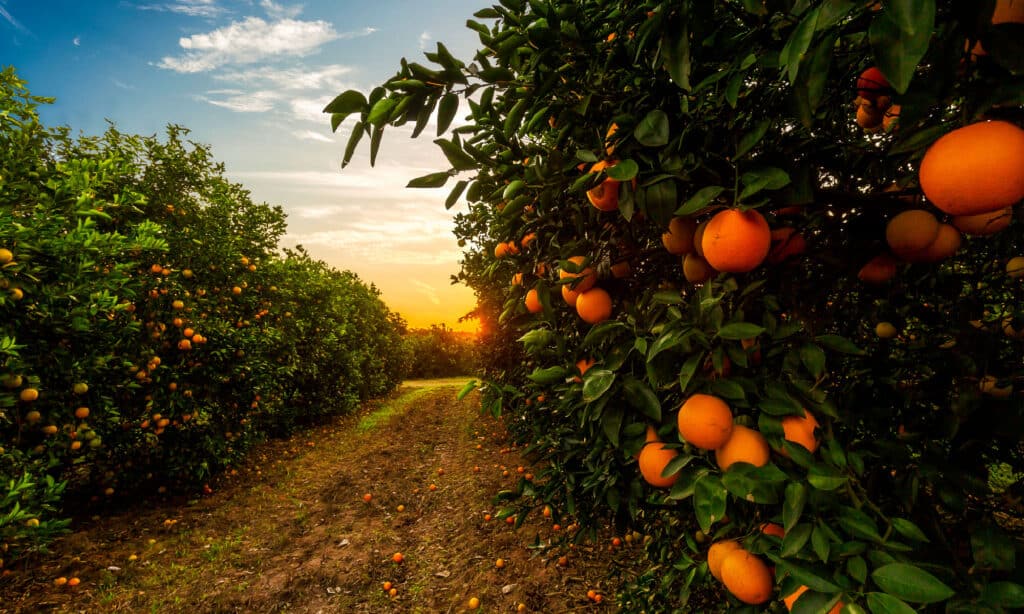
Citrus is farmed all over the world, with the majority of commercial groves being in subtropical areas.
©iStock.com/paulobaqueta
Despite being tropical plants, citrus is farmed all over the world, with the majority of commercial groves being in subtropical areas. Depending on the species and variety, the fruits ripen at various periods throughout the year. In addition to lime, lemon, avocado, and other tiny plants, this group also includes grapefruit and oranges. Lemons, grapefruits, mandarins, and limes are the best options for growers in the southern United States and coastal Texas since they thrive in those regions’ regularly warmer climates.
14. Herbs and Spices
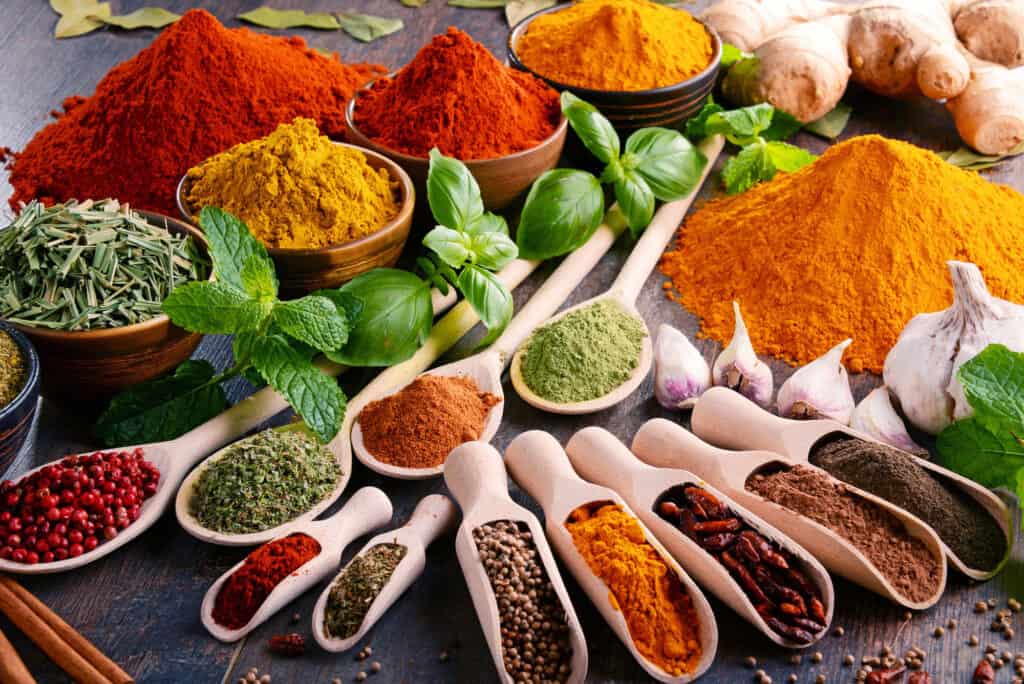
Texas’s Lower Valley and Winter Garden regions are where most of the state’s herb production occurs.
©iStock.com/monticelllo
Herbs and spices include spices such as coriander and herbs including mint and basil. Herbs are often picked fresh, but they can also be dried and used later. They are grown for fresh-cut leaves or soft plant components. Texas’s 10 to 20 full-time herb producers tend 10 to 20 acres of herb fields. Herbs are a part of several commercial vegetable farmers’ production plans. Texas’s Lower Valley and Winter Garden regions are where most of the state’s herb production occurs.
Summary of the 14 Most Valuable Crops Grown in Texas
| Number | Crop |
|---|---|
| 1 | Cotton |
| 2 | Corn |
| 3 | Sorghum |
| 4 | Oats |
| 5 | Wheat |
| 6 | Hay, Silage, and Other Forage Crops |
| 7 | Peanuts |
| 8 | Rice |
| 9 | Root and Tuber Crops |
| 10 | Bulb Crops |
| 11 | Fruiting Vegetables |
| 12 | Cucurbits/Melon Crops |
| 13 | Citrus and Subtropical Tree Crops |
| 14 | Herbs and Spices |
The photo featured at the top of this post is © iStock.com/szefei
Sources
- Texas A&M AgriLife Extension, Available here: https://aggie-horticulture.tamu.edu/vegetable/guides/the-crops-of-texas/
- Texas ALMANAC, Available here: https://www.texasalmanac.com/articles/principal-crops-in-texas
- Stacker, Available here: https://stacker.com/texas/most-valuable-crops-grown-texas
Thank you for reading! Have some feedback for us? Contact the AZ Animals editorial team.






